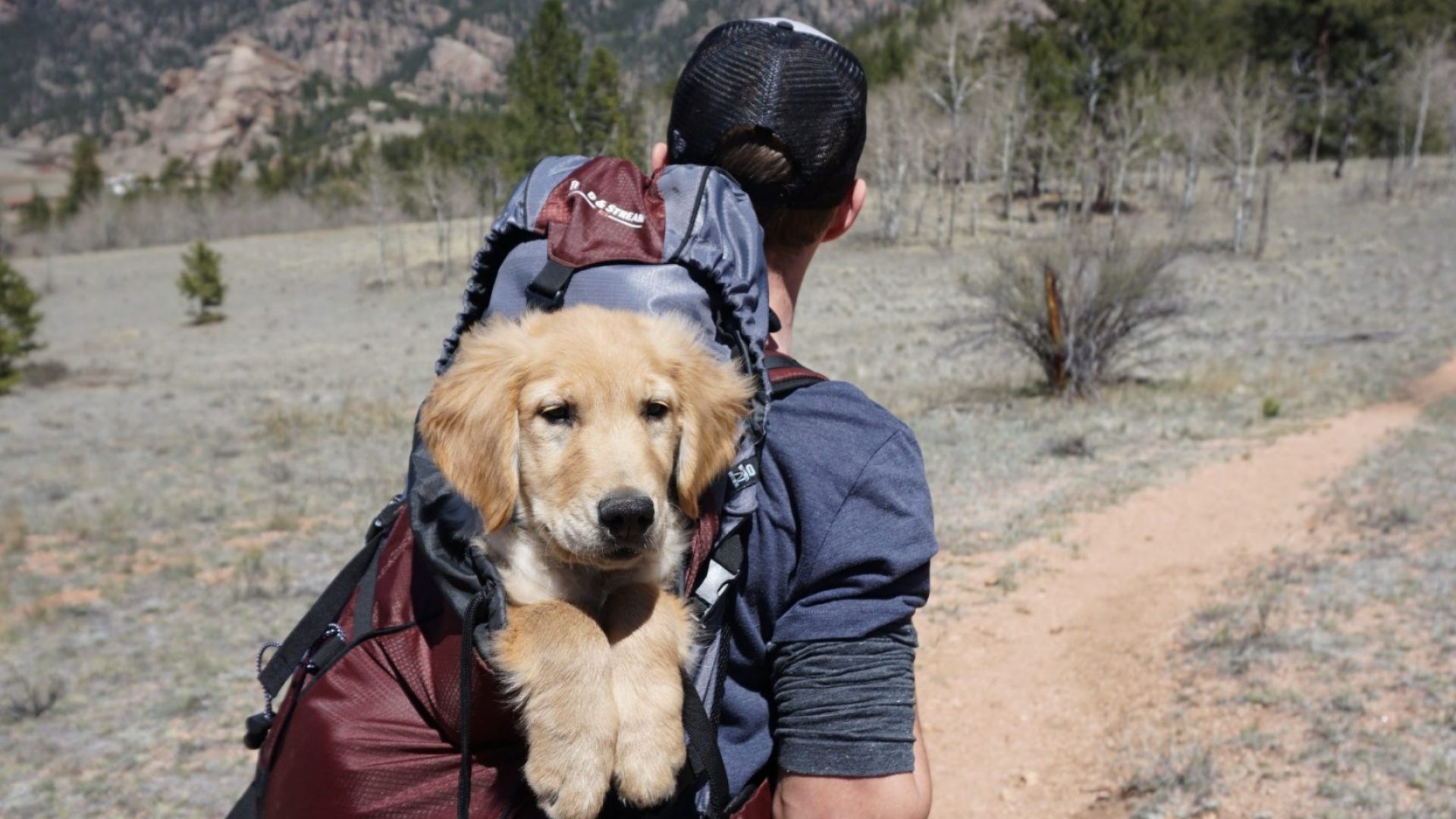
While dogs and cats are generally better off staying home, if you have to travel with them, do your research. Seek advice from your veterinarian and make sure you get a top-quality airline compliant pet carrier.
All pets boarding airlines are required to have current rabies vaccinations, a health certificate completed and endorsed by a veterinarian, according to USDA regulations. Check with the state veterinarian or your destination country for specific requirements.
Travel by Car
For some pets, the comfort of a car ride is an ideal method for travel. In this case, the pet owner can prepare by bathing and combing their animal before the trip. They can also give the animal a light meal and water. They should not put the pet in a carrier for too long, however, as this can make them anxious. For this reason, it is a good idea to start with a short drive and slowly increase the length of time.
Before a pet is driven, it is important to check with the state veterinarian’s office in the destination city. This will help the animal’s owner understand any health requirements that may be needed, such as a certificate of veterinary inspection. Vaccinations and deworming medications will also need to be current. This is especially important if the animal will be visiting an area where parasites are common, such as wooded areas.
When choosing a pet transport company, it is helpful to choose one that offers both air and ground transportation. This will ensure that the pet’s needs are met. In addition, it is a good idea to look at the company’s previous user reviews and feedback score.
A quality pet transport service will offer door-to-door pickup and delivery for a flat fee, allowing owners to relax while the animal is taken care of. Some companies even provide routinely walked animals. They can crate your pet if necessary, but some provide a cage-free option for cats, dogs and certain small mammals.
Whenever possible, driving is a better option for pet owners than flying, as it will minimize the stress of being in a confined space. However, there are times when flying is the only choice, such as for a vacation or a move. It is also important to weigh the risks, such as oxygen deprivation and heat stroke, when deciding whether to fly. It is especially risky for brachycephalic (flat-faced) breeds such as bulldogs, pugs and Persian cats, who have short nasal passages and are particularly vulnerable to these conditions. Luckily, most airlines will accept these types of pets, but it is best to call ahead.
Travel by Bus or Train
Many bus and train companies allow pets on their buses or trains, but the rules vary by company and even by state. For example, Amtrak only allows pets in the coach cabins if they are crated and restrained the whole time. In addition, the ACE (Altamont Commuter Express) trains that run between San Jose and Stockton require pets to be in a kennel or carrier at all times. BART (Bay Area Rapid Transit) has a different policy and only permits guide dogs, as well as service animals.
It’s important to research a train or bus company before you travel with your pet so you know what their policies and requirements are. It’s also a good idea to give your pet a test drive on a short distance trip before you travel long distances. This will help them get comfortable with the travel experience and feel more at ease. During the test, you can use familiar scents to make them feel at home and you can gradually increase your distances over time. A pheromone collar or homeopathic remedies can also be helpful in making your pet feel more calm.
If you are traveling internationally with your pet, a health certificate will be required in addition to other documentation. It will need to be signed by an accredited veterinarian that examines the animal and determines that it is free of infectious diseases and meets all import requirements for the country, state or territory you are entering. In most cases, the veterinarian will need to have USDA endorsement of the health certificate before it can be used for international travel.
When traveling with your pet, be sure to pack plenty of food and water. The food should be dry and soft, so your pet doesn’t have an upset stomach. It’s also important to pack collapsible bowls so that you don’t take up too much space with your pet’s belongings. You may also want to bring some toys or blankets that have familiar scents on them, as these can help reduce your pet’s stress level. Also, be sure to check with the hotels that you will be staying at and find out what their pet policies are.
Travel by Air
Veterinary services play an important role in interstate and international pet travel, and veterinarians should be involved as soon as possible to ensure that all necessary steps are taken in advance of the move. For example, some countries’ pre-travel requirements (such as rabies vaccinations, microchipping, and/or quarantine periods) can require preparation that takes six months or more in advance of the travel date.
Owners should contact the state animal health official in their destination state to learn about requirements for moving into that state. Depending on the destination state, these requirements may include a complete physical examination and USDA endorsement from a veterinarian at least 10 days in advance of departure or proof that the pet has been vaccinated and checked for parasites within 30 days prior to departure. Some states also prohibit certain species of animals, such as ferrets and hedgehogs.
Airlines have their own requirements for pets traveling with passengers in the cabin. Check with your airline to determine if they have space for your pet in the passenger cabin, and make sure you book your flight well in advance of your expected travel date. If your pet will be flying in the cargo hold, it’s important to book your flight early as well. Some airlines only allow a limited number of dogs and cats in the cargo hold per flight, and some have restrictions on carriers such as crate sizes, ventilation, and temperature. If you have a “snub-nosed” breed, such as a pug or French bulldog, it’s particularly important to check with your airline about their specific policies for these breeds.
Arrive at the airport early to give your pet ample time to rest and settle before the flight. It’s best to let your dog out on a leash before you go through the airline’s check-in door, so that he doesn’t get too anxious during the security check. Also, be sure to choose a soft-sided carrier that fits under the seat of your plane, and remember that most airlines do not allow curbside or self-service check-in for pet travelers.
During the flight, feed your pet according to the airline’s recommendations, and keep in mind that you may be required to leave food and water dishes in the carrier for your pet during long periods of wait time before or after the plane lands. Be sure the crate has sufficient ventilation, and is made of a sturdy material that your pet will not chew or scratch.
Travel by Cruise Ship
Traveling to a new destination can be exciting and fun, but for many pet owners leaving their beloved animals behind isn’t an option. Luckily there are several options around the country that allow travelers to explore with their pets and create memories together.
Pet owners can take their pets on cruise ships where they will be in a kennel and supervised by a full time pet attendant. This is a great option for those who want to make the most of their vacation and need peace of mind that their pet will be in good hands.
The only downside to taking your pet on a cruise is that they will not be able to interact with you, but this is also the case for traveling by plane or bus. If you do decide to travel by cruise ship, check the company’s policies and make sure they are pet friendly.
When it comes to air travel, pets are allowed to fly in cabin as long as they are small enough and fit comfortably into an airline-approved carrier of the correct size. When flying with a pet, it is important to arrive at your point of departure well in advance (several hours before the flight) and have all official documents including a Certificate of Veterinary Inspection signed by an accredited veterinarian.
Travel by train or bus is more of a challenge, as most major train and bus companies restrict pets from riding on their vehicles with the exception of service dogs. There are a few exceptions, such as Amtrak, but it is still best to call ahead and find out their policies and restrictions.
When it comes to international travel, most cruise lines have very strict pet policies and require reservations to be made in advance (sometimes over a year in advance). When on board, pets are kept in a separate pressurized and climate controlled section of the hold and must be secured into an airline-approved carrier of the correct weight. Traveling by sea is much like traveling by land, however, you may need to be prepared to spend more time in customs and immigration to ensure all necessary paperwork is complete and in order.
